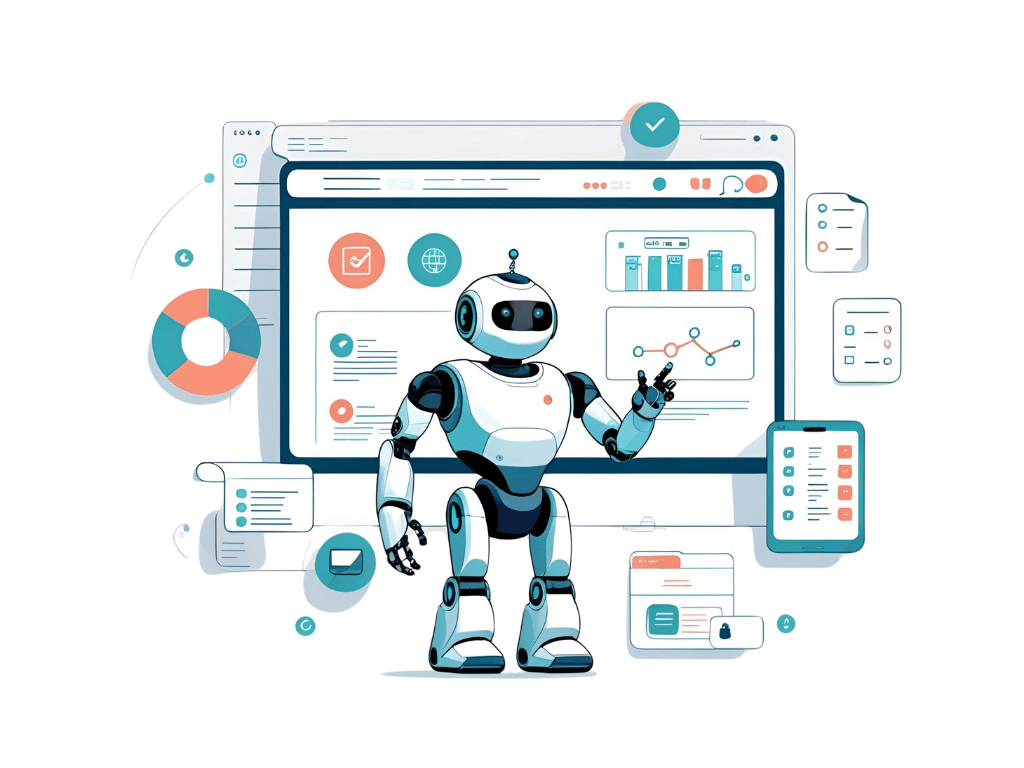- 8 min read

Your sales team is drowning in lead data, but deals are still slipping through the cracks.
You plug in an AI tool to score leads automatically—great, now you’ve got colorful charts...that no one trusts, understands, or acts on.
Welcome to the wild world of AI black boxes. Where the algorithm’s working hard somewhere in the background, but you’re still left saying: “Wait… why did it pick that lead? And not this one?”
That, my friend, is exactly where model interpretability comes in. It's not sexy, but it's what separates the AI tools that actually help your business grow—from the ones that just make PowerPoints prettier.
Model interpretability is your AI’s ability to show its work.
It means you (and your team, and maybe even your legal department) can understand how your AI model is making decisions. Not just the final answer, but what data it used, which variables mattered most, and how it got from point A (your input) to point B (your output).
So instead of some mysterious machine whispering “score: 97” about a lead, you see:
Now you’ve got a model that not only performs—you trust it.
You can’t optimize what you don’t understand. You can’t defend decisions if you’re flying blind. And you definitely can’t build systems that scale if the tech’s operating like a wizard behind a curtain.
If you're a lean team, marketing agency, SaaS operator, or IT-managed service provider, you don’t have time to babysit tools that create more questions than they answer.
Model interpretability is the difference between AI that adds leverage—and AI that adds risk.
Here’s how this hits the ground in real operational terms:
Your sales team won't use AI lead scoring if they don’t believe in it. Transparency builds confidence. Confidence gets buy-in. And that’s how you scale systems that actually get used.
With GDPR, FTC scrutiny, and a growing pile of ethical AI standards, you can’t just say “the algorithm did it.” Regulators want receipts. You need to show how your models treat people—and why.
You don’t need to be a legal whiz to understand how vital this is. You just need to not get fined into the Stone Age.
SaaS sales teams love automation—until it starts profiling users based on junk data or amplifying existing bias in their funnel. Interpretability surfaces those problems. So you can fix them before Twitter (or your investors) finds out.
If your tool tells you why it's flagging signals, you can course-correct faster. Double down on what’s working. Kill what isn’t. And make decisions based on logic, not vibes.
Glad you asked. Let’s break down a few ways the smart folks make this stuff a bit more human-friendly.
These tools don’t care if your model is a neural net or something you found in an obscure GitHub repo. That’s why they’re powerful—and popular.
Firms like Interpretable AI (yes, it's a real thing) are combining human legibility with modern performance—building causal models, audit trails, and feature selection tools designed for people who need answers they can defend.
That means less guessing, more trust—and fewer late-night Slack arguments about why the AI flagged your best pipeline as low quality.
Nope. Close, but not quite. Interpretability means understanding the internal workings of a model. Explainability usually refers to simplifying outputs for non-technical users.
So, the difference is like cooking the meal vs. describing what it tastes like. Both useful. Different jobs.
Not exactly. If your AI is suggesting emojis for Instagram posts, who cares why it picked the unicorn 🦄? But if it’s deciding which lead gets routed to your closers or which client project gets prioritized? Yeah—that better be transparent.
Wrong again. Some of the new-school interpretable models compete with top-performing black-box systems. You don’t always have to trade brains for clarity—you just need a smart strategy and the right architecture behind it.
Most teams don’t need 37 dashboards. They need one or two smart, visible systems guiding high-leverage decisions. Here’s where to start:
There are plug-and-play options (yes, even for lean teams), but ideally, you want a system built for your exact funnel, tools, and KPIs.
That’s what we do at Timebender. Semi-custom builds for marketing, sales, and service teams that want the power of AI—with the transparency that earns buy-in.
If your current tools are giving you predictions without explanations—if your models are brilliant but baffling—it’s time to fix that.
Book a free Workflow Optimization Session and let’s map out where transparency would actually save you time, drive adoption, and reduce your mental overhead.
You don’t need 10 more tools. You need better answers. Let’s get you those.
River Braun, founder of Timebender, is an AI consultant and systems strategist with over a decade of experience helping service-based businesses streamline operations, automate marketing, and scale sustainably. With a background in business law and digital marketing, River blends strategic insight with practical tools—empowering small teams and solopreneurs to reclaim their time and grow without burnout.
Schedule a Timebender Workflow Audit today and get a custom roadmap to run leaner, grow faster, and finally get your weekends back.
book your Workflow optimization session